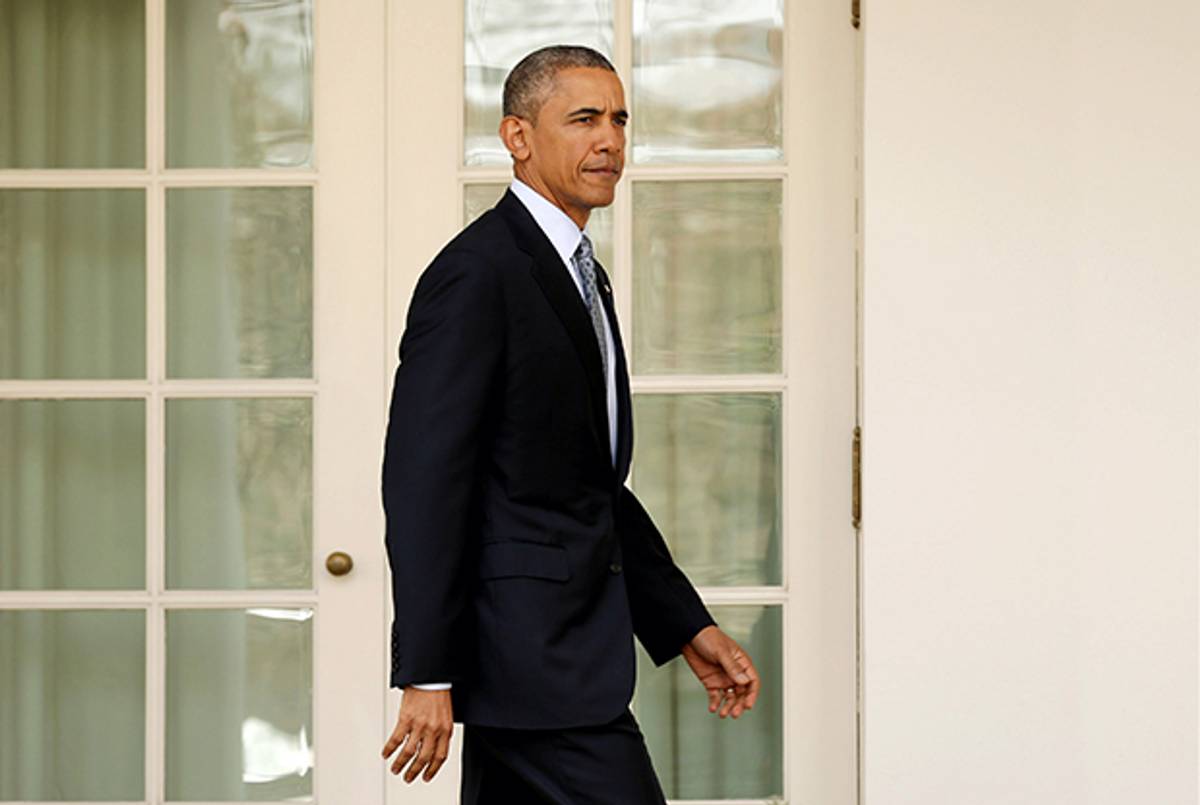
The White House Seder, an annual tradition that started when President Obama dropped in on a makeshift Seder held by three low-level staffers on the campaign trail in 2008, came at a particularly thorny time this year, as many Jewish leaders have expressed concern over Obama’s handling of Iran nuclear negotiations as well as the increasingly frosty relationship between the administration and Israeli Prime Minister Benjamin Netanyahu. The Friday night Seder at the White House, held the day after a preliminary framework on an Iran nuclear agreement was announced, was attended by Jewish members of the Obama Administration and their families.
In a statement, President Obama called the Exodus from Egypt “one of humanity’s great stories of liberation.”
The Exodus was neither easy nor quick. The Israelites’ journey to freedom required them to choose faith over fear and courage over complacency. Above all, it required the works of an awesome God, who led them out of bondage with a mighty hand and an outstretched arm.
The line about choosing “faith over fear and courage over complacency” could, if one wanted, be variously interpreted to apply to the Iran nuclear situation. Having faith in the diplomatic process, rather than fearing Iran’s nuclear capabilities, say; or having the courage to speak out against the limits of diplomacy and chide world leaders for complacency in the face of existential threat.
Obama also touched upon the lasting legacy of the Exodus narrative and its ties to the Civil Rights movement in America. “The story of the Exodus—the signs and wonders that appeared when hope seemed lost, the Jewish people’s abiding belief that they would one day reach the Promised Land—has inspired countless generations over the years,” the statement continued. “It inspired Jewish families to hold fast to their faith, even during times of terrible persecution. It inspired young Civil Rights leaders as they marched across an Alabama bridge in search of their own Promised Land, half a century ago.” (This may be news to students at Columbia University.)
But beyond the simmering global climate and cooling relations between Israel and the United States that surrounded this year’s Seder, the biggest question about the annual tradition remains the same: What did they eat?
This year’s menu was crafted by White House Chef Cris Comerford and White House Pastry Chef Susan Morrison, with help from guest chef Susan Barocas, a Washington, D.C.-based filmmaker and food writer. She added Moroccan Haroset Balls to the mix, a Sephardic dish that offset Ashkenazi mainstays like gefilte fish and matzo-ball soup made from a staffer’s family recipe. (Tablet columnist Joan Nathan made Arkansas Pear Charoset during a White House Passover cooking demonstration in 2012.)
Here’s the full White House Seder menu:
Gefilte fish
Haroset (Ashkenazic tradition)
Patricia Winter, Mother of Melissa Winter
Moroccan Haroset Balls (Sephardic tradition)
Chicken Soup with Matzo Balls
Joan Mass, Grandmother of Herbie Ziskend
Beet and Butternut Squash Salad
Sauté of Green Onions and Radish
Carrot Soufflé
Joan Lesser, Mother of Eric Lesser
Roasted Potatoes with Garlic and Onion
Roasted Sweet Potatoes
Savory Holiday Brisket
Contributed by Susan Sher
Seared Salmon with Roasted Artichokes
Chicken with Preserved Lemons and Green Olives
Raspberry Ganache Marjolaine
Jewel Chaudhary, Mother of Arun Chaudhary
Triple Layer Chocolate Macaroon Cake
Assorted Macaroons:
Chocolate Chunk Cinnamon Macaroons
Almond Coconut Macaroons
Stephanie Butnick is chief strategy officer of Tablet Magazine, co-founder of Tablet Studios, and a host of the Unorthodox podcast.